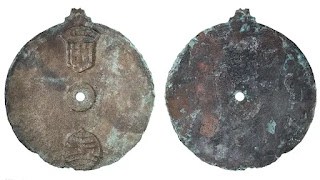Since the period of 15th Century is marked with extensive overseas exploration by adventurous explorers it emerged as a powerful factor in the spread of European culture across the globe.
The discovery of the sea route to India by the Portuguese in 1498 gave a boost to global exploration. Encouraged by the sponsorship of Prince Henry, the Portuguese began systematically exploring the Atlantic coast of Africa from 1418. In the 15th century, there were too many expeditions to explore many places the coast of Africa. In 1488, Bartolomeu Dias reached the Indian Ocean. With this achievement, a new wave of hope spread among the explorers.. After him Portuguese captain, Vasco da Gama, after a long and most difficult sea journey 10 Months after they set out for the journey finally neachea place calle Kappadu near Calicut in 1498,. After this journey Vasco de Gama with more determination and trust sailed to India to establish their monopoly in trade.
Some years ago - March 2016 the World's oldest maritime astrolabe (to find direction using stars) was found in shipwreck which, it is believed, to have guided Portuguese explorers on voyages to India in the 16th century. The major discovery marked the culmination of an 18-year archaeological search and recovery effort led by self-described "shipwreck hunter" David Mearns of Blue Water Recoveries Ltd. It is a known fact Astrolabes have been used since ancient times by the Arabs, Iranians and Indians.
 |
| World's oldest maritime astrolabe.bbc.com/ |
Above image: An astrolabe recovered from Esmeralda's wreck; National Museum of Oman, 2016 photo............
Marine archaeologists and historians were surprised about the discovery of the world's oldest navigational tool -Astrolabe off the coast of Oman in the shipwreck According to Marine archaeologists and other marine engineering researchers the instrument was once primarily used by mariners to measure the altitude of the Sun during their voyages to avoid getting lost on the high seas. .The daring Portuguese exploders when crossing the dangerous seas they not only relied on their maritime skills and weather patterns, they to a large extend had faith in the Astrolabe
 |
| World's oldest maritime astrolabe .indiatoday.in |
The astrolabe dates back to 1495 and 1500 and this one seems to have safely guided the Portuguese explorers and adventurers on perilous voyages to their prime destination - India in the 16th century.
 |
| Portuguese ship Esmeralda.thetimes.co.u |
.jpg) |
| 1568 CE Portuguese ship Esmeralda en.wikipedia.org |
Esmeralda was a Portuguese carrack (Portuguese: nau) that sank during a storm in the Indian Ocean in May 1503 off the coast of Oman as part of Vasco da Gama's 1502 Armada to India while commanded by da Gama's maternal uncle Vicente Sodré.The ship sank in the waters off of Al Hallaniyah Island in the Arabian Sea. . The boat called the Esmeralda, was part of a fleet led by Portuguese explorer Vasco da Gama, the first person to sail directly from Europe to India.World's oldest maritime astrolabe found in shipwreck........................
 |
| arrival of Vasco De gama1498 (drawn 1900 Gameiro)Calicut, India wikipedia |
 |
| site of shipwreck 1503 Oman .pinterest.co.uk |
''Astrolabes are comparatively rare, and while others have been cataloged, this is the earliest find by several decades.''
https://en.wikipedia.org/wiki/Esmeralda_%28carrack%29









